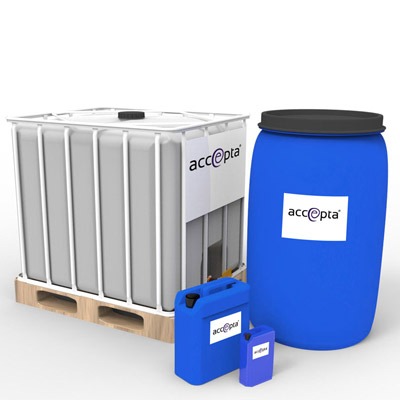Innovative Foam Control Solutions to Boost Your Manufacturing Processes
Innovative Foam Control Solutions to Boost Your Manufacturing Processes
Blog Article
A Comprehensive Overview to Applying Foam Control Solutions in Your Operations
Reliable foam control is a crucial aspect of operational effectiveness that commonly goes forgotten. Comprehending the details of foam generation can dramatically influence both productivity and item top quality. By analyzing crucial factors such as application compatibility and personnel training, organizations can optimize their foam management initiatives.
Understanding Foam Challenges
Foam difficulties are a considerable issue across various sectors, impacting functional efficiency and item high quality. The development of extreme foam can impede procedures such as mixing, transportation, and storage, causing increased downtime and waste. In fields like food and drink, drugs, and petrochemicals, foam can interfere with manufacturing lines, creating item incongruities and contamination threats.
In addition, foam can block equipment performance, causing costly repair work and upkeep. As an example, in wastewater therapy, foam can interfere with clarifier operations, causing reduced treatment performance and regulatory compliance issues.
Recognizing the underlying root causes of foam generation is vital for effective management. Aspects such as surfactants, temperature variations, and anxiety levels can all add to foam manufacturing. Recognizing these components enables industries to execute targeted strategies that minimize foam development while maintaining item honesty.
Kinds Of Foam Control Solutions

Mechanical remedies involve making use of gadgets such as foam skimmers or defoamers. These tools physically get rid of foam from the surface of fluids, thereby avoiding overflow and preserving optimum levels in tanks and activators. Chemical remedies, on the various other hand, include the application of defoaming agents-- substances that disrupt the foam structure, bring about its collapse. These agents can be silicone-based, organic, or liquid, each offering distinct advantages depending on the application atmosphere.
Lastly, operational approaches concentrate on process changes. This might include changing tools criteria, such as temperature level and pressure, or altering the flow rates of fluids to lessen foam generation. Additionally, carrying out great housekeeping methods can additionally alleviate foam development by reducing impurities that add to foam security.
Choosing the ideal foam control solution entails evaluating the particular requirements of the procedure, consisting of the kind of procedure, the attributes of the products entailed, and safety and security factors to consider.
Selecting the Right Products
Choosing the right foam control items requires a thorough understanding of the certain application and its unique difficulties. Aspects such as the sort of foam, the environment in which it happens, and the desired end result all play pivotal roles in item option. Foam Control. In sectors such as food handling, it is crucial to select food-grade defoamers that abide with safety laws while effectively taking care of foam.
In addition, take into consideration the thickness of the liquid where the foam issue exists. Some products are developed for low-viscosity applications, while others are customized for thicker fluids. Compatibility with existing procedures is another vital aspect; my sources the selected foam control representatives need to integrate seamlessly without interfering with total procedures.
Another crucial element is the method of application. Some items might call for dilution, while others can be applied directly. Assessing the ease of use and the required dose can provide insights into the item's effectiveness and cost-effectiveness.
Execution Strategies
Successful application methods for foam control remedies call for a systematic method that lines up product choice with operational click now needs. The very first step includes a thorough evaluation of the procedures where foam takes place, recognizing details locations that demand treatment. By engaging cross-functional teams, including high quality, engineering, and production assurance, organizations can collect insights that educate the choice of the most reliable foam control products.
Next, it is important to establish clear purposes for foam reduction, guaranteeing that these goals are measurable and attainable. This might entail specifying acceptable foam levels and the timelines for application. Training employees on the residential or commercial properties and application methods of picked foam control agents is equally vital, as appropriate usage is essential for ideal outcomes.
Additionally, integrating foam control remedies into existing process calls for careful planning. Eventually, a well-structured approach will certainly improve functional efficiency while efficiently handling foam-related obstacles.
Monitoring and Examining Effectiveness
Monitoring and assessing the efficiency of foam control remedies is important for making certain that executed techniques produce the preferred outcomes. This procedure entails organized data collection and analysis to evaluate the performance of foam control agents and techniques. Secret efficiency signs (KPIs) must be developed before execution, enabling a clear standard against which to measure progress.

Assessing efficiency additionally needs routine evaluations of foam control procedures and agent effectiveness. This can be achieved through sampling and testing, allowing drivers to determine if current solutions are fulfilling functional requirements. It is important to get feedback from team members who interact with these systems daily, as their understandings can expose operational subtleties that quantitative data might ignore.

Eventually, an organized surveillance and evaluation structure aids recognize necessary changes, making certain that pop over here foam control options remain efficient, inexpensive, and straightened with organizational goals.
Verdict
In final thought, effective foam control remedies are crucial for optimizing functional efficiency and maintaining item high quality. A thorough understanding of foam challenges, combined with the choice of appropriate products and execution techniques, assists in the successful administration of foam generation.
Executing excellent housekeeping methods can also reduce foam formation by decreasing impurities that add to foam security.
Selecting the ideal foam control items calls for an extensive understanding of the specific application and its special obstacles (Foam Control).Successful implementation methods for foam control options call for a systematic method that straightens item selection with operational needs.In final thought, efficient foam control options are important for enhancing functional effectiveness and keeping item top quality. An extensive understanding of foam challenges, integrated with the choice of ideal products and implementation strategies, helps with the effective monitoring of foam generation
Report this page